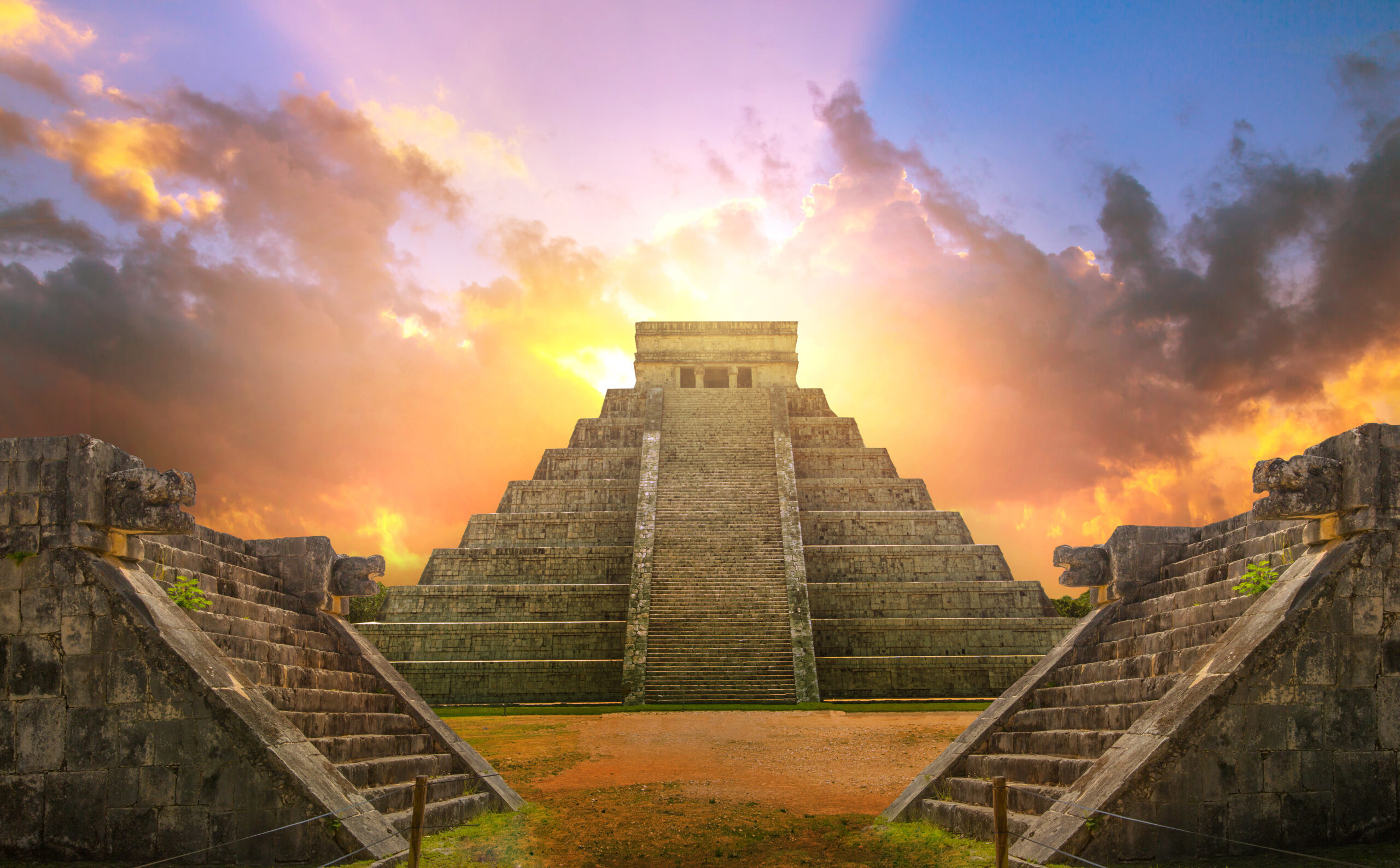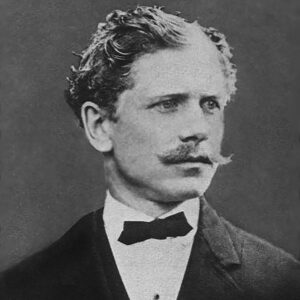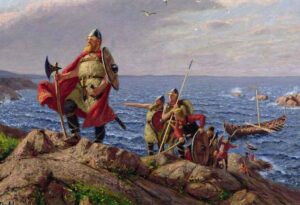Where did the Aztecs come from? Despite a wealth of archaeological and written records, it remains a pesky question without a concrete answer.
In Aztec writings, from secondhand sources, and passed down via oral tradition, a place called Aztlan is described as the mythical homeland of the Aztecs. But where, or what, is Aztlan?
Origin story
Aztlan has different translations depending on the source. Some believe it derives from the Nahuatl words “aztatl” (heron) and “tlan” (place of). These sources interpret the name as either “Place of Whiteness” or “Place of Reeds.” Other sources suggest it simply means “the land of the Aztecs.”
According to legend, it was from Aztlan that the forebears of the Aztecs, the Mexica, embarked on a centuries-long migration. This migration eventually led them to the Valley of Mexico, where they founded the capital of the Aztec empire, Tenochtitlan.
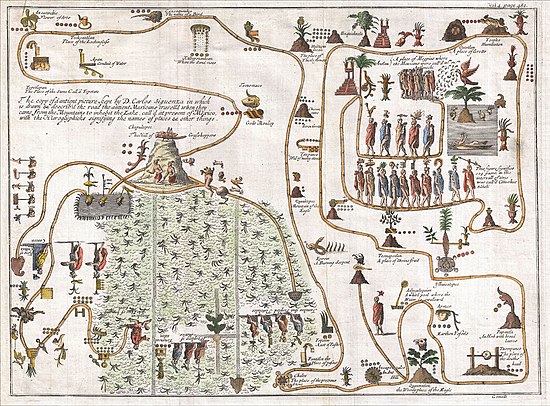
A map of Aztlan. Photo: Gemelli Careri
The legend describes Aztlan as fertile and prosperous. Variously described as an island or region, it was north of the Mexica’s eventual settlement in the Valley of Mexico.
On their journey, the Mexica were guided by Huitzilopochtli, the god of war and the sun. They moved south from Aztlan, searching for a sign that would indicate where they should establish their capital city. This sign was prophesied to be an eagle perched on a cactus with a snake in its beak. This image later became the symbol of Mexico.
A utopia
To the Aztecs, Aztlan was a utopia. People there were immortal and able to choose how old they would like to appear to others. It had abundant ducks, fish, herons, maize, and beans.
According to legend, seven tribes (the Mexica, Chalca, Acolhua, Tepaneca, Tlahuica, Tlaxcalan, and Xochimilca) lived in seven caves in a place called Chicomoztoc. While Aztlan is the homeland, Chicomoztoc is the origin place.
The tribes left their caves because Huitzilopochtli told them to find a new home. The migrations occurred in waves. First, the Xochimilca left, then the Chalca, the Tepenecas, the Alcolhua, the Tlahuica, the Tlaxacalan, and finally the Mexica. The Mexica eventually arrived at Lake Texcoco, where they founded Tenochtitlan in 1325 AD. This city later became the heart of the Aztec empire.
Aztec manuscripts such as the Codex Boturini and Codex Azcatitlan describe the migration from Aztlan to Tenochtitlan. Historians believe the migration took place in the late 1160s AD.
Later sources
Dominican missionary Diego Duran studied and recorded the ways of the Aztecs. “Moctezuma having become a great lord…determined to learn about the place where his ancestors had lived and about the seven caves to which his histories had given special attention,” Duran wrote.
Moctezuma’s desire to find their homeland was likely an attempt to legitimize and solidify his rule. He sent out an expeditionary force of 60 sorcerers with precious jewels, gold, feathers, and other valuables, hoping to entice their ancestors.
According to legend, the force arrived at a hill several days after they left Tenochtitlan. Here, a mysterious old man greeted them. The man was a high priest and guardian of Aztlan. He allowed the group to visit and they transformed into birds to journey the rest of the way. In Aztlan, they met the mother of Huitzilopochtli, who was waiting for her son to return.
The story draws a stark contrast between the idyllic Aztlan and Tenochtitlan. The latter cared mostly about conquest, sacrifice, and military might. Aztlan did not. Aztlan and Tenochtitlan ran parallel to each other, one a paradise and the other a hell.
When the tribes left Aztlan, they experienced hardships, illnesses, and dangers. The land was not abundant with food, and their descendants became evildoers. Tenochtitlan was so repulsive to those living in Aztlan that they considered the occupants traitors to the homeland.
Location
The Dillmans, a family of treasure hunters, have been searching for Aztec gold for decades. They believe Aztlan is somewhere in Utah. As a result of the Mexican-American War, Mexico ceded a vast territory to the U.S. in 1848. This included present-day California, Arizona, New Mexico, Texas, and parts of Colorado, Nevada, and Utah.
According to the Dillman family, there is evidence of linguistic similarities between tribes in Utah and the Aztecs. Some linguists agree that there are at least small similarities between indigenous groups in Utah and the Aztecs. Nahuatl was spoken in some parts of the southwestern United States. In Utah, the main language was Numic. Nahuatl and Numic belong to the Uto-Aztecan language family. However, research into a linguistic connection is limited.
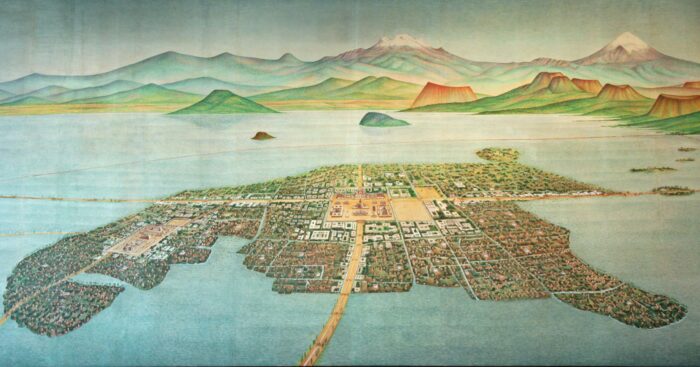
Painting of Tenochtitlan. Photo: National Museum of Anthropology, Mexico City
Archaeological evidence suggests that there were trade networks and cultural exchanges between Mesoamerican groups and societies in the American Southwest. This indicates some level of contact between Aztec culture and groups in Utah.
Some Mexican intellectuals suggested that the island of Mexcaltitán de Uribe could be Aztlan. A tiny island city in the Mexican state of Nayarit, it has a vibrant fishing culture but there is no physical evidence to back up this claim.
Political spin
Aztlan was used as the symbol of the U.S. Chicano movement of the 1960s and 1970s. During this period, Chicano activists drew upon Aztlan as a symbolic and ideological framework to assert their Indigenous heritage and claim the lands of the southwestern U.S. Aztlan fit a powerful narrative of reclaiming ancestral lands and asserting cultural identity in the face of social and economic struggles experienced by Mexican-Americans.
Other organizations, like the Brown Berets and the Chicano Student Movement of Aztlan, also adopted Aztlan as a powerful motif.
Conclusion
The physical search for Aztlan had ground to a halt by the 20th century. The homeland became primarily symbolic, representing the longing Mexicans have to regain their heritage and an ideal to strive for.
